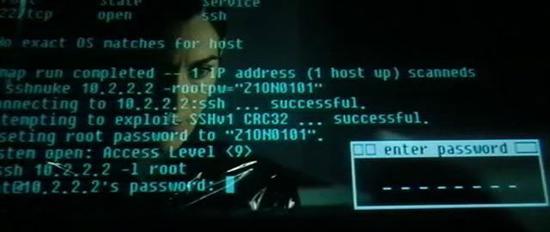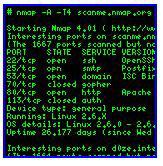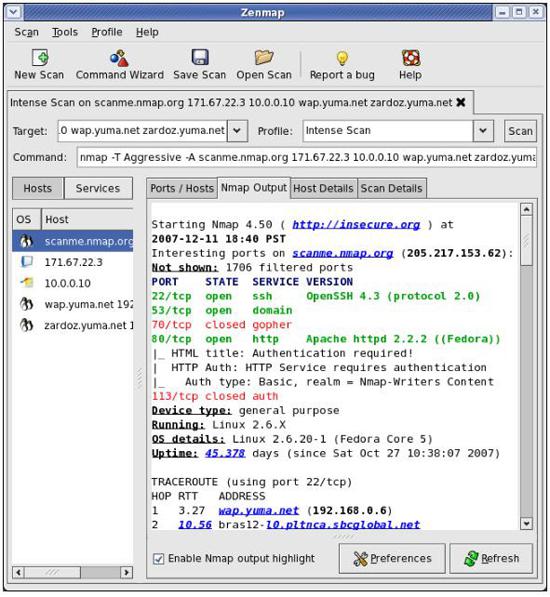Do you need a port scanner for Windows 7? A port scanner can help you to secure your system and check if there are any open ports that could be used to gain access to your system. Therefore, I highly recommend to download a port scanner and try it yourself.

(Image: The Matrix – Trinity using a port scanner to shut down the power grid)

Do you know the port scanner they used in the movie The Matrix? It’s NMAP. Well, as it happens, that port scanner supports Windows Vista and Windows 7. NMAP is probably one of the most popular port scanners and gets the job done.
Of course that program that Trinity uses to shut down the power grid (sshnuke) is fictive.

Download NMAP (Port Scanner for Windows 7, XP, Vista, actually most UNIX systems)
Of course, NMAP comes with a user interface for Windows 7, so you don’t have to launch it via command line.
But it’s still handy to know some commands, because you can enter them via the GUI too:

Port scanning = legal?
So, but what exactly can you do with that port scanner and is it even legal?
To answer the latter question first, yes it is legal to use a port scanner, because you simply ring the doorbell, you are not accessing something that is not public. It’s like walking down the road and ringing the bell at each house. It’s annoying, but you can’t do anything about it unless the person is doing it too many times.
NMAP Examples:
nmap -sV -p 22,53,110,143,4564 198.116.0-255.1-127
Launches host enumeration and a TCP scan at the first half of each of the 255 possible eight-bit subnets in the 198.116 class B address space. This tests whether the systems run SSH, DNS, POP3, or IMAP on their standard ports, or anything on port 4564. For any of these ports found open, version detection is used to determine what application is running.
So, let’s say you want to check if a server is using any of the standard internet services and ports, you could run the query above. There are many services that could be possibly installed on a server and all of them have default ports. Many system administrators change at least some of the ports to secure their server.
The maximum port number is 65535, so theoretically, you’d have to scan 65535 ports if you want to find out on what ports a server is listening, but usually attackers target a certain service. A target might be your mail server or SSH.
Scan/Secure your own PC
Go to http://www.whatismyip.com/, copy your IP and enter it as the target, then select “Intense scan, all TCP ports” from the drop-down field to check your very own system for possible vulnerabilities.

